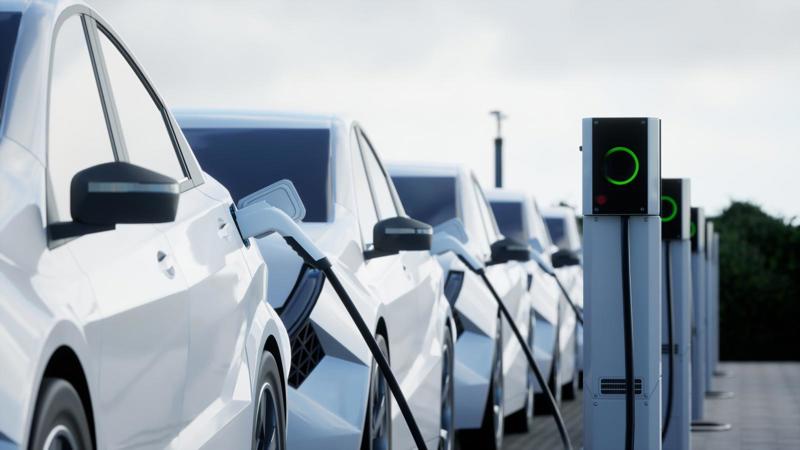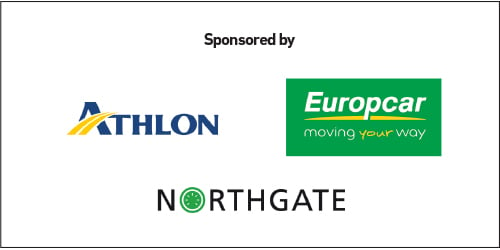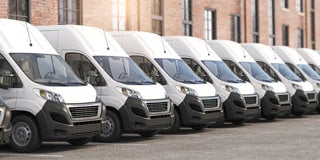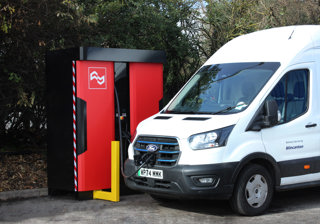This feature was taken from our Electric Fleet: Moving to Net Zero special report.

The requirement for manufacturers to hit targets for the sales of zero-emission vehicles (ZEVs) in the UK could lead to massive opportunities for fleet decision-makers: but there are also traps to avoid.
Under the ZEV Mandate, which became law in January, ZEVs must this year make up 22% of an OEM’s new car registrations and 10% of their new van sales, or they will face fines of £15,000 for each vehicle sold outside the target.
These proportions will increase annually until 2030, when they will be 80% and 70% respectively. But the reality of the targets is not as clear-cut as this, as there are several alternative ways for manufacturers to meet compliance. These are intended to mitigate risks associated with product investment cycles and uncertainty regarding sales volumes.
However, the need for manufacturers to sell more battery electric cars and vans is undeniable, and this will have significant knock-on effects for fleets.
“Any manufacturer that hasn’t resolved its remaining challenges with their product and supply could find themselves in a precarious position as the fines are huge,” says Caroline Sandall-Mansergh, consultancy and channel development manager at Alphabet.
“Manufacturers are deploying very different tactics, including that customers commit to a predetermined percentage of ZEVs to receive a favourable discount.
“While that could be perceived as welcome for some fleet operators, there simply isn’t the right level of commercial product available for most fleets to commit to taking even a small percentage of electric light commercial vehicles (e-LCVs), thus souring the relationship.”
Pat Skelly, CEO of Prohire and Progreen lead, says that in some cases, manufacturers are telling fleets that when they order diesel vans, they must take a certain number of e-LCVs as well.
This is certainly the experience of many fleet decision-makers who have spoken to Fleet News, with Duncan Webb, fleet director at The AA, telling the Fleet News at 10 webinar: “If you’re doing bulk orders, there certainly seems to be an attempt to try and link the number of ICE (internal combustion engine) vehicles to the number of alternative fuel vehicles you order.
“I think that’s a tactic that is very much coming into play in terms of bulk ordering in the market.”
Manufacturers are also offering significant discounts on ZEVs and, although this sounds overwhelmingly positive, it can have drawbacks.
“While everyone loves a good deal, very high discounts being offered on certain products is unsustainable and is not necessarily a good thing for fleet operators trying to manage a company car choice list,” says Sandall-Mansergh.
“For example, if the cost of the vehicle went from being heavily discounted to then return to a more typical discount level, it could no longer be available to employees within a certain grade, which creates challenges for fleet operators almost overnight.
“Extreme fluctuation is not good for fleets that are trying to maintain some consistency of choice and pricing over a set period.
“Fleets that have a very limited and specific choice list through just one or two manufacturers are potentially more exposed to extreme fluctuation in vehicle availability and pricing.
“Therefore, it’s important to be agile and always have a plan B and plan C so you can flex when you need to. The best advice for anyone now is to consider all eventualities.”
This includes potentially switching funding methods to allow fleets to be ready and agile to take advantage of these offers.
Rory Mackinnon, commercial director at Holman, says fleets locked into traditional lease contracts may struggle to capitalise on these opportunities due to significant early-termination penalties which might negate some, or all, of the financial benefits being offered.
“Fleets need leasing arrangements that give them the flexibility to act when it suits them,” he adds. “If you don’t have the flexibility needed to react tactically, you will have to sit on the sidelines and watch as deals come and go.”
One option is to switch from the traditional contract hire (operating lease) to contract hire (finance lease), says Mackinnon. In both funding methods, the finance company will own the chosen vehicle and the customer will pay a monthly rental to use it over a contracted period.
The major difference between the two is that with finance lease, the fleet takes the residual value (RV)and depreciation risk. At the end of the contract the vehicle is sold to a third party, and if the achieved value is more than the predicted RV, the customer will be given a share. Conversely, if the vehicle is worth less than expected, the fleet will have to make up the difference.
“The ideal scenario is that a fleet holds on to vehicles projected for strong resale value and when a good deal emerges for suitable electric replacements, they can defleet and maximise their return on the old vehicles while capitalising on the EV offer,” says Mackinnon. “It’s a win-win for both sides.”
However, he sounds a note of caution for fleet decision-makers not to get too tempted by the discounts and take on ZEVs before their organisation is ready for them.
“This ‘push’ market is unlike previous ‘push’ markets, where customers received similar vehicles at reduced prices and were happy to be part of it,” adds Mackinnon.
“While this translates to potential deals for fleets, the decision to switch to a ZEV isn’t always straightforward: replacing an ICE vehicle with an EV might not always align with operational needs.”
A further effect of the discounts being offered is that they make BEVs more affordable through salary sacrifice schemes.
“We're seeing an increase in OEM discounts and campaigns for salary sacrifice,” says Nick Jones, strategic relationship manager at Novuna Vehicle Solutions. “Quite a few of them are offering charge points as well and that's something that can be quite attractive for some people.”
Decoding ZEV mandate targets
The ZEV mandate targets are not as clear-cut as they seem. There are multiple ways for manufacturers to avoid fines without hitting the published targets for battery electric vehicle registrations.
A credit-based system exists whereby manufacturers can bank credits if they overperform on their targets. These can be used to bolster performance in future years when the targets become stricter, or can be sold to other brands that are underperforming.
Large groups, such as Stellantis and Volkswagen can also pool their registrations to mitigate the poor performance of one brand with the stronger performance of another.
A further layer of complexity comes in the form of emissions credits, awarded for sales of low emission cars such as plug-in hybrids.
Also, each manufacturer has an individual target based on their 2021 average fleet emissions: the 22% figure for this year should be treated as a benchmark number, rather than set in stone for all manufacturers.
If manufacturers reduce their average CO2 emissions and exceed their CO2 target, then they can ‘convert’ that into credits against their ZEV targets; subject to an exchange rate, a cap (65% of the 22% target in 2024) and only for the first three years.
Details about how each manufacturer chooses to utilise these options will not be publicly disclosed until March 2026.
Decarbonising a fleet is not just about replacing an ICE vehicle with a like-for-like electric replacement – it may open the door to other, more operationally efficient transport modes.
In our new Electric Fleet: Moving to Net Zero special report, we look at the fleets that are already utilising flying drones, rolling robots or powered mobility such as e-cargo bikes and light vehicles, assessing use cases and considerations for organisations looking to pilot these options.
We also look ahead to forthcoming battery electric technology to evaluate its potential impact on fleet operations, with longer ranges and faster charging among the key benefits, as well as the potential of hydrogen, which is undergoing a number of Government-funded trials in the UK.
Other topics we investigate include the ongoing impact of the ZEV Mandate and how fleet managers need to be prepared to take advantage of any potential deals offered by manufacturers, and technology trends – including batteries – which will have an influence on fleet operations.
We also look at what fully-electric cars will hit the UK market over the next 12 to 18 months, some of which will offer a WLTP range of more than 400 miles.






















Login to comment
Comments
No comments have been made yet.